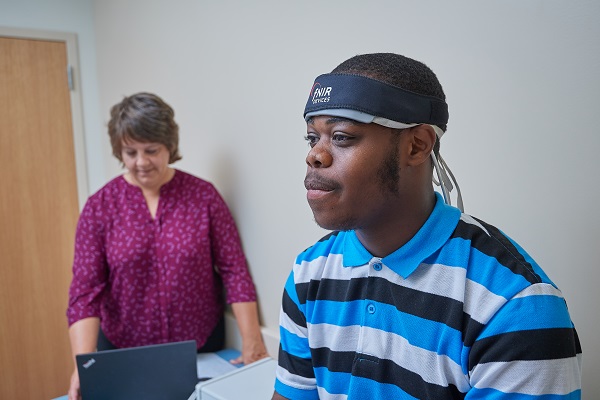Research In Action
Research In Action
Breadcrumb

According to the Centers for Disease Control and Prevention, approximately 1.6 million to 3.8 million concussions occur in the U.S. each year. The majority of concussions—65%—occur in children and teens, but at least 30% of those are not related to sports. Concussions are complex injuries that the pediatric healthcare community still struggles to understand.
As researchers studying concussions, one of the biggest challenges we face is our perspective. Every discipline—from sports medicine to emergency medicine to engineering—brings its own and looks at a different part of the elephant, so to speak.
In response to this dilemma, I have joined with four like-minded colleagues to form the PROFOUND-CHILD Network (Promoting Resources and the Observation and Formalization and Understanding of Mild Neurotrauma Deficits in Children). Truly a multidisciplinary collaboration in every sense of the word, it is unique to the field. Instead of looking at different parts of the organism in silos, through PROFOUND, we want to pull the different types of concussion research together so that we can have a better understanding of the entire elephant.
The PROFOUND-CHILD Network and Its Goals
I am thrilled to be starting this collaboration with exceptional colleagues Christina L. Master, MD, sports medicine pediatrician, Division of Orthopedic Surgery, and the Center for Injury Research and Prevention, at CHOP, Andrew R. Mayer, PhD, professor of Translational Neuroscience at The Mind Research Network and adjunct assistant professor of Neurology at the University of New Mexico Health Science Center; John J. Leddy, MD, clinical professor, Department of Orthopaedics, at the University at Buffalo; and Rebekah Mannix, MD, senior associate physician, Division of Emergency Medicine, at Boston Children’s Hospital..
We see value in taking a multi-disciplinary approach to concussion research in children and teens, and share the following common goals:
- Improving concussion diagnosis by developing more objective measures. Diagnosing concussions can be challenging because the symptoms are subjective and non-specific. Currently, no biomarkers exist for clinicians to objectively diagnose patients or predict how they will recover.
- Developing more proactive, effective treatment options. Much of the treatment for concussions currently tends to involve taking a “wait and see” approach. We are exploring other ways to promote concussion recovery possibilities, including the use of an exercise prescription to promote recovery.
We plan to leverage the resources offered by each of our institutions and the ability to draw on our respective regions on the East Coast and in the Southwest to conduct multi-site studies. Because concussions occur in so many ways and manifest in a variety of types that researchers continue to try to understand, the opportunity to assemble a large, diverse study population is highly desirable.
Our research will naturally be embedded in the clinical setting, allowing us to collect data from patients being treated for concussion. We expect that, as we analyze data and explore the perspectives we each bring to the table, new questions and objectives will emerge. Although the PROFOUND-CHILD Network is in its infancy in terms of its goals, we’re looking forward to a productive and beneficial partnership.

